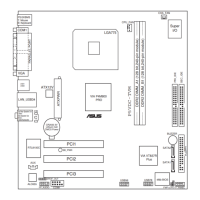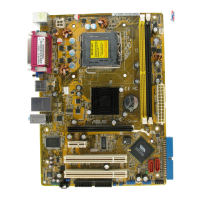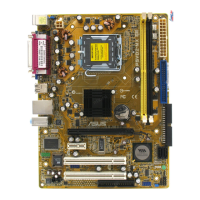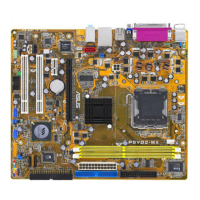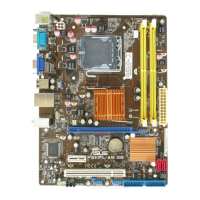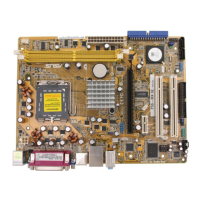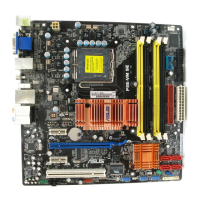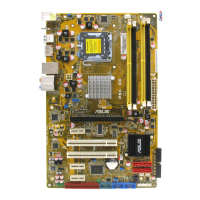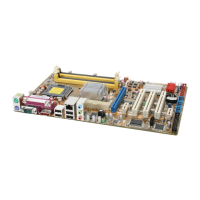
Do you have a question about the Asus P5VDC-TVM SE and is the answer not in the manual?
| Form Factor | Micro ATX |
|---|---|
| CPU Socket Type | LGA 775 |
| Number of Memory Slots | 4 |
| Maximum Memory Supported | 4 GB |
| PCI Express x16 | 1 |
| PCI Express x1 | 1 |
| PCI Slots | 2 |
| IDE | 2 x ATA133 |
| LAN Speed | 10/100 Mbps |
| USB 1.1/2.0 | 4 x USB 2.0 |
| Video Outputs | VGA |
| CPU Type | Pentium 4 / Pentium D |
| Chipset | VIA VT8237A |
| Front Side Bus | 800 MHz |
| Memory Type | DDR2 / DDR |
| Memory Standard | DDR2 533/400, DDR 400/333/266 |
| SATA | 2 x SATA 3Gb/s |
| PS/2 | 2 |
| Dimensions | 24.4 cm |
| Power Connector | 24-pin ATX |
| LAN Chipset | VIA VT6103 |
| Audio Ports | 3 (Line-in, Line-out, Mic-in) |
Details motherboard features and supported technologies like 64-bit CPU, Dual-Core CPU, PCI Express, and SATA I.
Lists crucial safety precautions and guidance before installing components or changing motherboard settings.
Explains the motherboard layout, placement direction, and screw hole locations for installation.
Covers the installation and handling of the LGA775 socket and CPU, including heatsink and fan.
Details DDR/DDR2 DIMM sockets, installation, removal, and memory configuration options.
Describes PCI and PCI Express slots, and procedures for installing and configuring expansion cards.
Explains the function and usage of the Clear RTC RAM jumper for clearing CMOS settings.
Details rear panel and internal motherboard connectors for various peripherals and components.
Guides users on how to enter, navigate, and utilize the BIOS setup utility for system configuration.
Explains the BIOS interface elements like legend box, list box, and navigation keys for easy setup access.
Provides an overview of essential system information and settings like date, time, and IDE/SATA device detection.
Covers advanced CPU-related settings, boot priorities, and system performance tuning options.
Details memory timing, frequency settings, display adapter configuration, and VGA memory allocation.
Allows enabling/disabling onboard devices like IDE, USB controllers, LAN, and audio controllers.
Configures ACPI settings, system suspend types, and wake-up events for power saving.
Manages Plug and Play OS settings and IRQ assignments for PCI and ISA devices.
Displays real-time system temperatures, fan speeds, and voltage readings for system health.
Allows adjustment of CPU clock frequencies and voltages for performance tuning.
Includes options for loading default settings, setting passwords, and saving/exiting the BIOS configuration.
